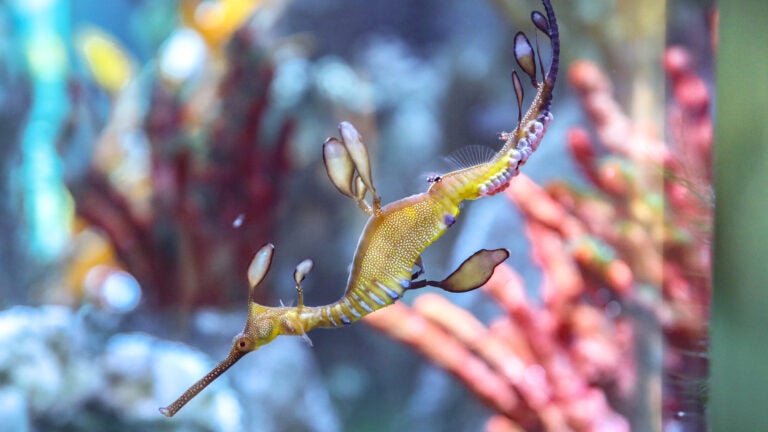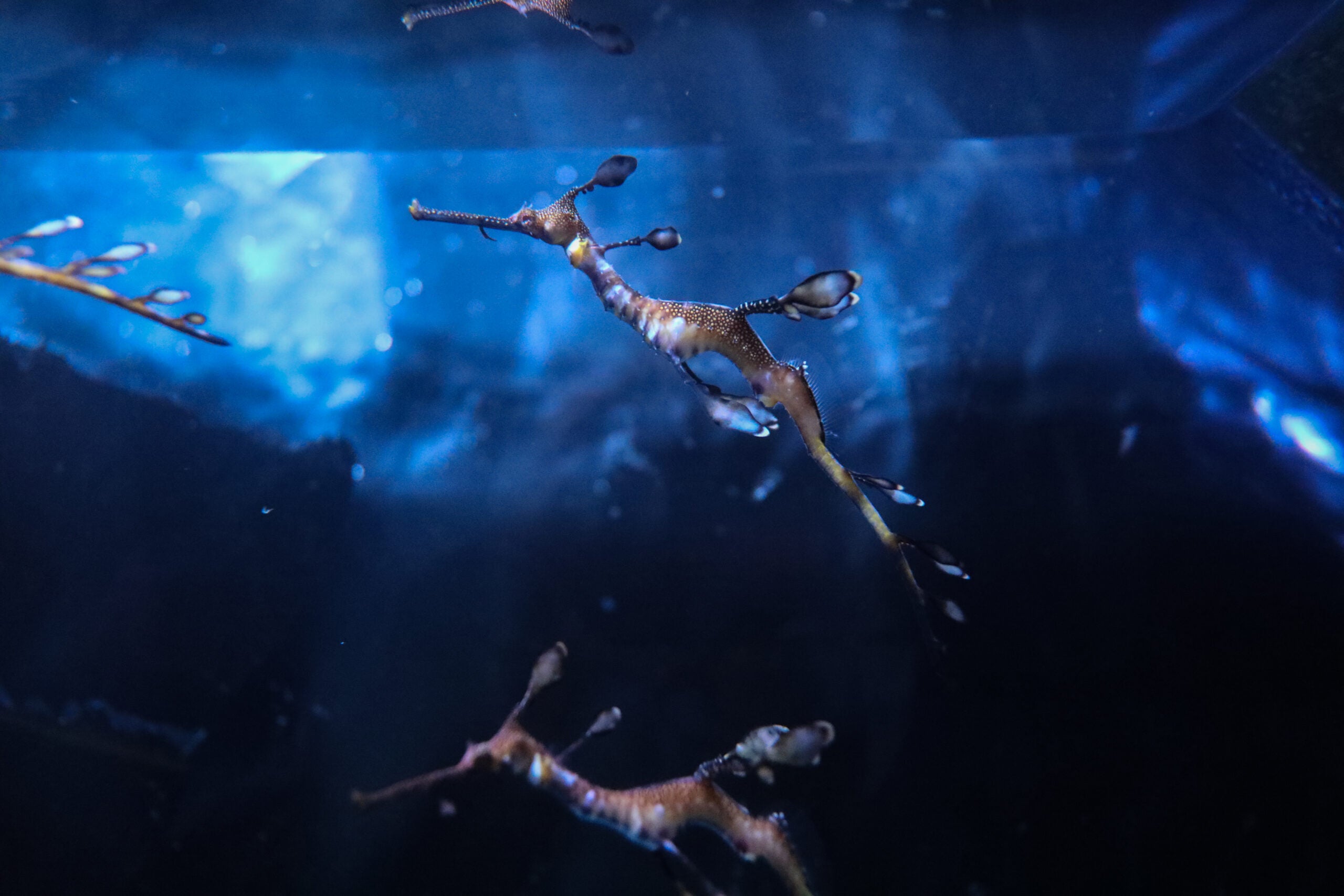Newsletter Signup
Stay up to date on all the latest news from Boston.com

After trying for more than a decade, staff members at the New England Aquarium have successfully bred sea dragons, rare creatures similar to seahorses that are only found near Australia.
The aquarium routinely breeds various fish species, but getting sea dragons to procreate proved particularly challenging. The efforts started back in 2008, after aquarium staff saw success with seahorse breeding programs.
Since weedy seadragons, also known as common seadragons, are only found in very specific areas, raising them in aquariums helps protect wild populations. But it is no easy task, and only a handful of institutions around the world have pulled off this feat, according to a blog post from the aquarium.
This is due to a couple of factors, most notably the elaborate mating ritual that the animals engage in. Once the eggs are transferred to the male, he fertilizes them and carries them until they are hatched.
“Seadragons have an elaborate vertical mating ritual, swimming side-by-side as the female transfers her eggs to the male’s tail to fertilize and carry them,” Manager of Permanent Galleries at the New England Aquarium Jeremy Brodt said in a statement. “The amount of daylight, water temperature, nutrition, and tank size must be just right for the animals to be successful, and even then, the eggs may still be dropped or end up unfertilized.”
As part of their work trying to breed the seadragons, aquarium staff members attempted to create the ideal conditions for a successful egg transfer. They went as far as building a special, taller tank at the aquarium’s Quincy Animal Care Facility so that the seadragons would have enough vertical space to execute their delicate dance.
But last May, luck turned in their favor. Staff members unexpectedly found a male weedy seadragon carrying eggs inside his exhibit space at the aquarium.
“All the stars aligned, and it just happened,” Brodt said in a statement.
To give the baby seadragons their best chance of survival, staff members acted quickly. The male carrying the eggs was moved out of its exhibit into a behind-the-scenes tank to make sure the eggs were not accidentally dislodged. There, staff could better keep an eye on the father-to-be and make sure nothing was amiss.
About a month and a half later, in mid-July, the eggs began to hatch. The hatchlings were carefully removed and placed into another tank, this one stocked with the nutritious food they needed to survive.

“Newly hatched seadragons are delicate and demanding,” Allison Waltz-Hill, a senior aquarist said in a statement. “For the first several weeks, my days revolved around their care.”
Feeding the hatchlings was a serious challenge for aquarium staff. During their first couple days, the hatchlings ate minuscule crustaceans known as copepods and baby brine shrimp. To keep up with their nutritional needs, staff members soon switched to feeding them day-old, tiny mysis shrimp. They grew and grew, feeding on gradually larger mysis shrimp.
The hatchlings measured just two centimeters at birth. Today, they measure about six inches long.
Staff members continue to monitor their development, and the hatchlings could move back to their exhibit tank over the summer. Some of them will likely be moved to other aquariums in order to diversify genetics for future breeding programs.
“This rare opportunity has provided us with an invaluable learning experience and the ability to contribute our experiences to further the collective knowledge and well-being of this species,” Waltz-Hill said in a statement.
Weedy seadragons get their name from the unique leaf-like appendages that sprout from their bodies, according to The Australian Museum. In the wild, they use these appendages to blend in with kelp-covered rocky reefs.
The animals are found at depths from one meter to 50 meters along the coastline of Tasmania and Southern Australia.
Stay up to date on all the latest news from Boston.com
Stay up to date with everything Boston. Receive the latest news and breaking updates, straight from our newsroom to your inbox.
Conversation
This discussion has ended. Please join elsewhere on Boston.com